The Day the Earth Stood Still
8.8 /10 1 Votes
94% Rotten Tomatoes Story by Harry Bates Duration Language English | 7.8/10 IMDb 4.7/5 Amazon Genre Sci-Fi Country United States | |||||||||||||||||||||||||||||||||
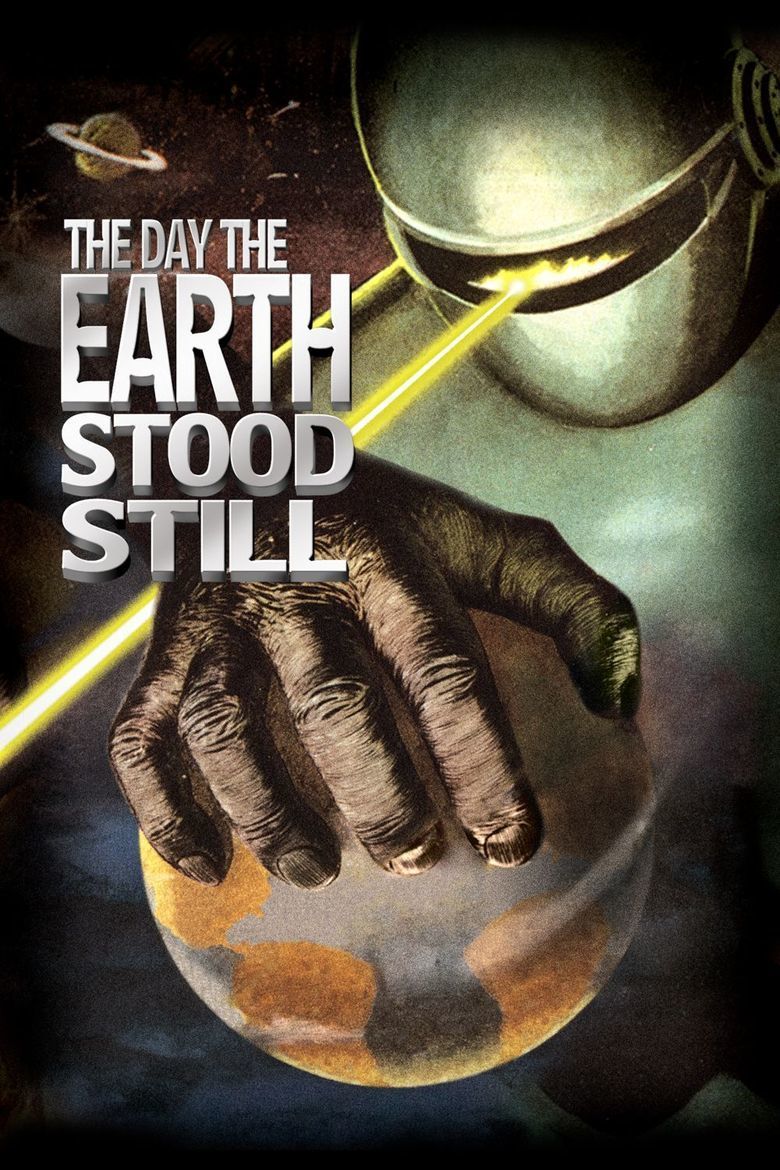 | ||||||||||||||||||||||||||||||||||
Release date September 28, 1951 (1951-09-28) Based on Farewell to the Master1940 novel by Harry Bates Writer Edmund H. North (screen play), Harry Bates (based on a story by) Initial release September 18, 1951 (New York City) Cast (Klaatu/Carpenter), (Helen Benson), (Tom Stevens), (Prof. Jacob Barnhardt), (Bobby Benson), (Mrs. Barley) Similar movies Independence Day , Close Encounters of the Third Kind , The Day the Earth Stood Still , Transformers: Age of Extinction , District 9 , E.T. the Extra-Terrestrial Tagline From out of space... A warning and an ultimatum | ||||||||||||||||||||||||||||||||||
The day the earth stood still trailer 2 keanu reeves jennifer connelly
The Day the Earth Stood Still (a.k.a. Farewell to the Master and Journey to the World) is a 1951 black-and-white American science fiction film from 20th Century Fox, produced by Julian Blaustein, directed by Robert Wise, that stars Michael Rennie, Patricia Neal, Billy Gray, Hugh Marlowe, and Sam Jaffe. The screenplay was written by Edmund H. North, based on the 1940 science fiction short story "Farewell to the Master" by Harry Bates. The score was composed by Bernard Herrmann.
Contents
- The day the earth stood still trailer 2 keanu reeves jennifer connelly
- The day the earth stood still 2 5 movie clip gort appears 1951 hd
- Plot
- Cast
- Metaphors
- Development
- Pre production
- Filming
- Herrmanns score
- Music and soundtrack
- Critical response
- Legacy
- Klaatu barada nikto
- Adaptations
- References
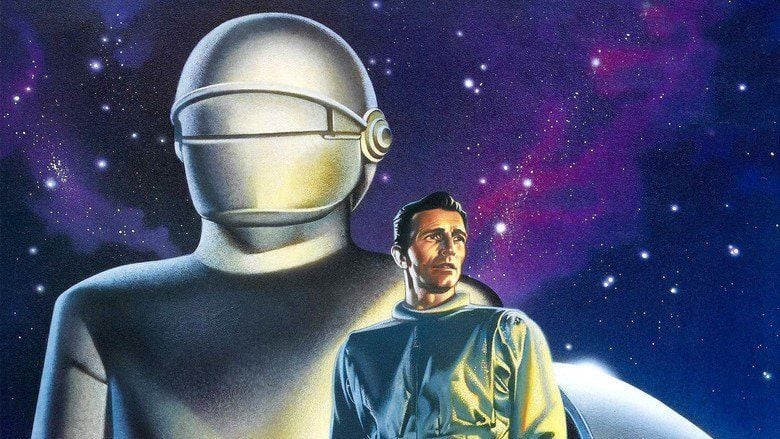
In The Day the Earth Stood Still, a humanoid alien visitor named Klaatu comes to Earth, accompanied by a powerful eight-foot tall robot, Gort, to deliver an important message that will affect the entire human race.

In 1995, the film was selected for preservation in the United States National Film Registry as "culturally, historically, or aesthetically significant."
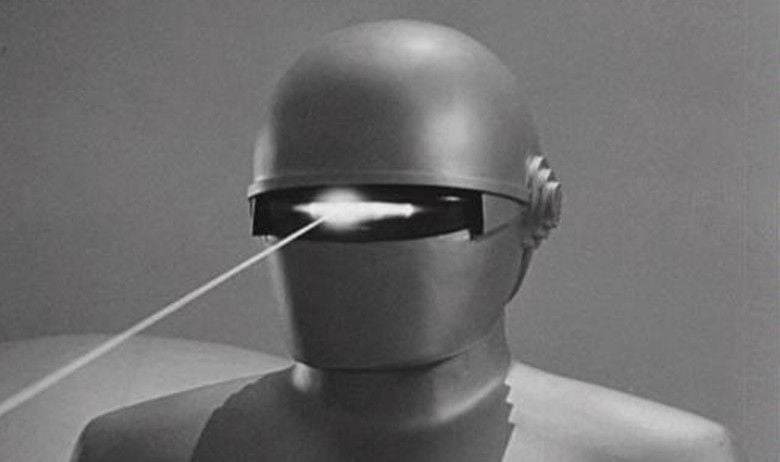
The day the earth stood still 2 5 movie clip gort appears 1951 hd
Plot
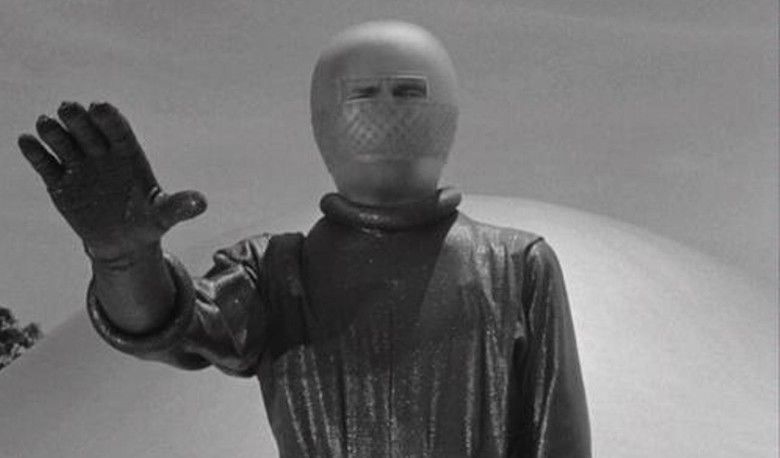
When a flying saucer lands in Washington, D.C., the Army quickly surrounds it. A humanoid (Michael Rennie) emerges, announcing that he has come in peace. When he unexpectedly opens a small device, he is shot by a nervous soldier. A tall robot emerges from the saucer and quickly disintegrates the soldiers' weapons. The alien orders the robot, Gort, to stop. He explains that the now-broken device was a gift for the President which would have enabled him "to study life on the other planets".
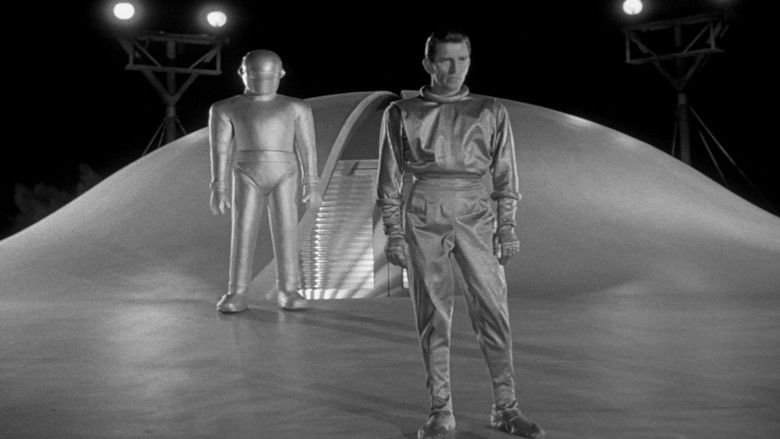
The alien, Klaatu, is taken to Walter Reed Hospital. After surgery, he uses a salve to quickly heal his wound. Meanwhile, the Army is unable to enter the saucer; Gort stands outside, silent and unmoving.
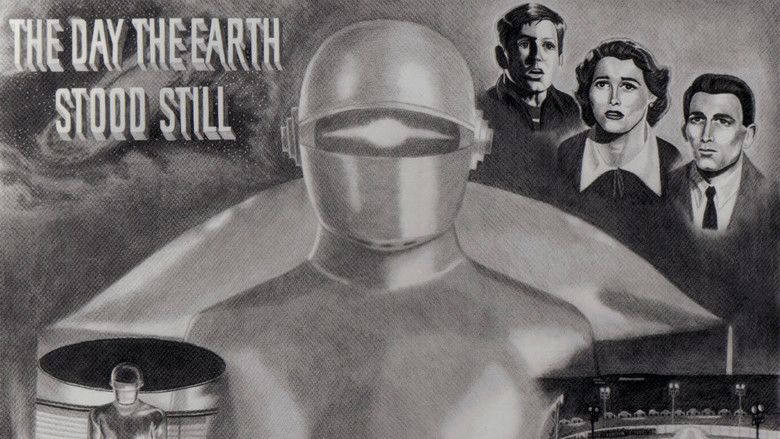
Klaatu tells the President's secretary, Mr. Harley (Frank Conroy), that he has a message that must be delivered to all the world's leaders simultaneously. Harley tells him that such a meeting in the current political climate is impossible. Klaatu suggests that he be allowed to go among humans to better understand their "unreasoning suspicions and attitudes". Harley rejects the proposal, and Klaatu remains under guard.
Klaatu escapes and lodges at a boarding house as "Mr. Carpenter", the name on the dry cleaner's tag on a suit he "borrowed". Among the residents are young widow Helen Benson (Patricia Neal) and her son Bobby (Billy Gray). The next morning, Klaatu listens to the boarders speculate about why the alien is here.
While Helen and her boyfriend Tom Stephens (Hugh Marlowe) go out, Klaatu babysits Bobby. The boy takes Klaatu on a tour of the city, including a visit to his father's grave in Arlington National Cemetery; Klaatu learns that most of those buried there were killed in wars. The two visit the Lincoln Memorial, then the heavily guarded spaceship. Klaatu asks Bobby who is the greatest living person; Bobby suggests Professor Barnhardt (Sam Jaffe). Bobby takes Klaatu to Barnhardt's home, but the professor is absent. Klaatu adds an equation to a problem on Barnhardt's blackboard and leaves his contact information with the suspicious housekeeper.
That evening a government agent takes Klaatu to Barnhardt. Klaatu explains that the people of other planets have concerns now that humanity has developed rockets and a rudimentary form of atomic power. Klaatu declares that if his message is ignored, "Earth will be eliminated." Barnhardt agrees to gather scientists from around the world at the saucer; he then suggests that Klaatu give a harmless demonstration of his power. Klaatu returns to his spaceship that night, unaware that Bobby has followed him. Bobby sees Gort knock out two sentries and Klaatu enter the saucer.
Bobby tells Helen and Tom what he saw, but they do not believe him until Tom takes a diamond he found in Klaatu's room to a jeweler and learns it is "unlike any other on Earth." Klaatu finds Helen at her workplace, and they take an empty service elevator, which stops precisely at noon. Klaatu reveals his true identity, then asks for her help. He has neutralized all electricity everywhere for 30 minutes, except for such things as hospitals and aircraft in flight.
After Tom informs the authorities of his suspicions, Helen breaks up with him. She and Klaatu go to Barnhardt's home. En route he tells her that should anything happen to him, she must say to Gort, "Klaatu barada nikto." Their taxi is spotted and hemmed in; Klaatu makes a break for it and is shot dead. Helen quickly heads to the saucer. Gort disintegrates both sentries and advances on her. When Helen utters Klaatu's words, the robot carries her into the spaceship, then leaves to retrieve Klaatu's body. Gort brings Klaatu back to life, but he explains to Helen that his revival is only temporary.
Klaatu addresses Barnhardt's assembled scientists, informing them that he represents an interplanetary organisation that created a police force of invincible robots like Gort. "In matters of aggression, we have given them absolute power over us." Klaatu concludes, "Your choice is simple: join us and live in peace, or pursue your present course and face obliteration." Klaatu and Gort re-enter the spaceship and depart.
Cast
Cast notes
Well-known broadcast journalists of their time, H. V. Kaltenborn, Elmer Davis, Drew Pearson, and Gabriel Heatter, appeared and/or were heard as themselves in cameo roles. Spencer Tracy and Claude Rains were originally considered for the part of Klaatu.
Metaphors
In a 1995 interview, producer Julian Blaustein explained that Joseph Breen, the film censor installed by the Motion Picture Association of America at the Twentieth Century Fox studios, balked at the portrayal of Klaatu's resurrection and limitless power. At the behest of the MPAA, a line was inserted into the film; when Helen asks Klaatu whether Gort has unlimited power over life and death, Klaatu explains that Gort has only revived him temporarily and "that power is reserved to the Almighty Spirit." Of the elements that he added to Klaatu's character, screenwriter Edmund North said, "It was my private little joke. I never discussed this angle with Blaustein or Wise because I didn't want it expressed. I had originally hoped that the Christ comparison would be subliminal."
That the question even came up in an interview is proof enough that such comparisons did not remain subliminal, but they are subtle enough so that it is not immediately obvious to all viewers that those elements were intended to compare Klaatu to Christ. When Klaatu escapes from the hospital, he steals the clothing of a "Maj. Carpenter," carpentry being the profession Jesus learned from his father Joseph. He presents himself as John Carpenter, the same initials as Jesus Christ (and borrowing a given name from one of his disciples, John). His previous actions are misunderstood, and he is eventually killed by military authority. At the end of the film, Klaatu, having risen from the dead, ascends into the (night) sky. Other parallels include: his coming to Earth with a message for all mankind; his befriending of a child; possessing wisdom and specialised scientific knowledge beyond any human being; and people being given a sign of his power. At the very start of the film, one of the radar technicians, upon observing the speed of Klaatu's spaceship, is heard to exclaim, "Holy Christmas!"
Development
Producer Julian Blaustein set out to make a film under the working titles of Farewell to the Master and Journey to the World that illustrated the fear and suspicion that characterised the early Cold War and Atomic Age. He reviewed more than 200 science fiction short stories and novels in search of a storyline that could be used, since this film genre was well suited for a metaphorical discussion of such grave issues. Studio head Darryl F. Zanuck gave the go-ahead for this project, and Blaustein hired Edmund North to write the screenplay based on elements from Harry Bates's 1940 short story "Farewell to the Master". The revised final screenplay was completed on February 21, 1951. Science fiction writer Raymond F. Jones worked as an uncredited adviser.
Pre-production
The set was designed by Thomas Little and Claude Carpenter. They collaborated with the noted architect Frank Lloyd Wright for the design of the spacecraft. Paul Laffoley has suggested that the futuristic interior was inspired by Wright's Johnson Wax Headquarters, completed in 1936. Laffoley quotes Wright and his attempt in designing the exterior: "... to imitate an experimental substance that I have heard about which acts like living tissue. If cut, the rift would appear to heal like a wound, leaving a continuous surface with no scar."
Filming
Principal outdoor photography for The Day the Earth Stood Still was shot on the 20th Century Fox sound stages and on its studio back lot (now located in Century City, California), with a second unit shooting background plates and other scenes in Washington D.C. and at Fort George G. Meade in Maryland. The shooting schedule was from April 9 to May 23, 1951. The primary actors never travelled to Washington for the making of the film. Director Robert Wise indicated in the DVD commentary that the War Department refused participation in the film based on a reading of the script. The military equipment shown, however, came from the 3rd Armored Cavalry Regiment then stationed at Ft. Meade which supplied the vehicles, equipment and soldiers for the segments depicting Army operations. One of the tanks in the film bears the "Brave Rifles" insignia of the 3rd Armored Cavalry Regiment.
The robot Gort, who serves Klaatu, was played by Lock Martin, who worked as an usher at Grauman's Chinese Theater and stood seven feet, seven inches tall. Not used to being in such a confining, heat-inducing costume, he worked carefully when wearing the two oversize, laced-up-the-front or back, foamed neoprene suits needed for creating the illusion on screen of a seamless metallic Gort. Wise decided that Martin's on-screen shooting time would be limited to half-hour intervals, so Martin, with his generally weak constitution, would face no more than minor discomfort. These segments, in turn, were then edited together into film's final print.
In a commentary track on DVD, interviewed by fellow director Nicholas Meyer, Wise stated that he wanted the film to appear as realistic and believable as possible, in order to drive home the motion picture's core message against armed conflict in the real world. Also mentioned in the DVD's documentary interview was the original title for the movie, "The Day the World Stops." Blaustein said his aim with the film was to promote a "strong United Nations."
Herrmann's score
The music score was composed by Bernard Herrmann in August 1951, and was his first score after he moved from New York to Hollywood. Herrmann chose unusual instrumentation for the film: violin, cello, and bass (all three electric), two theremin electronic instruments (played by Dr. Samuel Hoffman and Paul Shure), two Hammond organs, a large studio electric organ, three vibraphones, two glockenspiels, marimba, tam-tam, two bass drums, three sets of timpani, two pianos, celesta, two harps, one horn, three trumpets, three trombones, and four tubas. Herrmann's notable advances in film scoring included Unison organs, tubas, piano, and bass drum, staggered tritone movement, and glissando in theremins, as well as exploitation of the dissonance between D and E-flat and experimentation with unusual overdubbing and tape-reversal techniques. By using the theremin Herrmann made one of music's first forays into electronic music, one year before Karlheinz Stockhausen and three years before Edgard Varèse, something that was overlooked by the classical elite.
Music and soundtrack
20th Century Fox later reused the Bernard Herrmann title theme in the original pilot episode of Irwin Allen's 1965 TV series Lost in Space; the music was also used extensively in Allen's Voyage to the Bottom of the Sea series episode, “The Indestructible Man”. Danny Elfman noted The Day the Earth Stood Still's score inspired his interest in film composing, and made him a fan of Herrmann.
Critical response
The Day the Earth Stood Still was well received by critics and is widely regarded as one of the best films of 1951. Variety praised the film's documentary style and wrote that "the yarn is told interestingly enough and imbued with sufficient science-fiction lures and suspense so that only seldom does its moralistic wordiness get in the way ... Cast, although secondary to the story, works well." Harrison's Reports wrote: "Very good! It is by far the best of the science-fiction pictures yet produced. It holds one's interest undiminished from start to finish and, although the theme is admittedly fantastic, one is made to feel as if he is seeing a real-life occurrence because of the expert handling of the subject matter and the extremely fine special effects work." The Los Angeles Times praised the film's seriousness, though it also found "certain subversive elements". Bosley Crowther of The New York Times wrote a dismissive review, however, calling the film "tepid entertainment" and describing Gort as "oddly unmenacing."
The Day the Earth Stood Still was moderately successful when released, accruing US$1,850,000 in distributors' domestic (U. S. and Canada) rentals, making it the year's 52nd biggest earner.
The Day the Earth Stood Still earned more plaudits overseas: the Hollywood Foreign Press Association gave the filmmakers a special Golden Globe Award for "promoting international understanding." Bernard Herrmann's score also received a nomination at the Golden Globes. The French magazine Cahiers du cinéma was also impressed, with Pierre Kast calling it "almost literally stunning" and praising its "moral relativism."
The Day the Earth Stood Still is ranked seventh in Arthur C. Clarke's list of the best science fiction films of all time, just above Stanley Kubrick's 2001: A Space Odyssey, which Clarke himself co-wrote.
The Day the Earth Stood Still holds a 94% "Certified Fresh" rating at the film review aggregator website Rotten Tomatoes.
Legacy
The Day the Earth Stood Still received recognition from the American Film Institute and was selected for preservation in the United States Library of Congress' National Film Registry. In 2001, it was ranked number 82 on 100 Years...100 Thrills, a list of America's most heart-pounding films. It placed number 67 on a similar list 100 Years...100 Cheers, a list of America's most inspiring films. In June 2008, the American Film Institute revealed its "10 Top 10" — the best ten films in ten "classic" American film genres — after polling more than 1,500 people from the creative community. The Day the Earth Stood Still was acknowledged as the fifth best film in the science fiction genre. The film was also on the ballot for AFI's other lists including 100 Years...100 Movies, the tenth anniversary list, 100 Years...100 Heroes and Villains for Klaatu in the heroes category, 100 Years...100 Movie Quotes for the famous line "Gort! Klaatu barada nikto!" and AFI's 100 Years of Film Scores. In 2004, the film was selected by The New York Times as one of The Best 1000 Movies Ever Made.
Lou Cannon and Colin Powell believed the film inspired Ronald Reagan to discuss uniting against an alien invasion when meeting Mikhail Gorbachev in 1985. Two years later Reagan told the United Nations, "I occasionally think how quickly our differences worldwide would vanish if we were facing an alien threat from outside this world."
Klaatu barada nikto
Since the release of the film, the phrase "Klaatu barada nikto" has appeared repeatedly in fiction and in popular culture. The Robot Hall of Fame described it as "one of the most famous commands in science fiction," while Frederick S. Clarke of Cinefantastique called it "the most famous phrase ever spoken by an extraterrestrial."
Patricia Neal had a problem saying the phrase, though she was proud of the film overall. "I do think it's the best science fiction film ever made, although I admit that I sometimes had a difficult time keeping a straight face. Michael would patiently watch me bite my lips to avoid giggling and ask, with true British reserve, 'Is that the way you intend to play it?"
Edmund H. North, who wrote The Day the Earth Stood Still, also created the alien language used in the film, including the iconic phrase "Klaatu barada nikto". The official spelling for the phrase comes directly from the script (as shown in the adjacent image) and provides insight as to its proper pronunciation.
No translation was given in the film. Philosophy professor Aeon J. Skoble speculates the famous phrase is a "safe-word" that is part of a fail-safe feature used during diplomatic missions such as the one Klaatu and Gort make to Earth. With the use of the safe-word, Gort's deadly force can be deactivated in the event the robot is mistakenly triggered into a defensive posture. Skoble observes that the theme has evolved into a "staple of science fiction that the machines charged with protecting us from ourselves will misuse or abuse their power."
Fantastic Films magazine explored the meaning of "Klaatu barada nikto" in a 1978 article titled The Language of Klaatu. The article, written by Tauna Le Marbe, who is listed as their "Alien Linguistics Editor," attempts to translate all the alien words Klaatu used throughout the film. In the article the literal translation for Klaatu barada nikto was "Stop Barbarism (I have) death, bind" and the free translation was "I die, repair me, do not retaliate."
The documentary Decoding "Klaatu Barada Nikto": Science Fiction as Metaphor examined the phrase "Klaatu barada nikto" with some of the people involved with The Day the Earth Stood Still. Robert Wise, director of the film, related a story he had with Edmund North saying North told him, "Well, it's just something I kind of cooked up. I thought it sounded good." Billy Gray, who played Bobby Benson in the film, said that he thought that the message was coming from Klaatu and that, "barada nikto must mean ... save Earth." Florence Blaustein, widow of the producer Julian Blaustein, said North had to pass a street called Baroda every day going to work and said, "I think that's how that was born." Film historian Steven Jay Rubin recalled an interview he had with North when he asked the question, "What is the direct translation of Klaatu barada nikto, and Edmund North said to me 'There's hope for Earth, if the scientists can be reached'."
Adaptations
The film was dramatized as a radio play on January 4 1954 for the Lux Radio Theater; Michael Rennie reprised his lead role as Klaatu with actress Jean Peters as Helen Benson. This production was later re-broadcast on the Hollywood Radio Theater, the re-titled Lux Radio Theater, which aired on the Armed Forces Radio Service.
References
The Day the Earth Stood Still WikipediaThe Day the Earth Stood Still (1951 film) IMDbThe Day the Earth Stood Still (1951 film) Rotten TomatoesThe Day the Earth Stood Still (1951 film) Amazon.comThe Day the Earth Stood Still themoviedb.org
